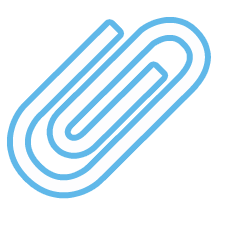
Ops for Law
Law Practice Operations
Lean Manufacturing
Lean, developed by Toyota, is a philosophy of continuous improvement that seeks to increase the speed with which a process can deliver desired results by eliminating waste. “Waste” is a technical concept that includes any unnecessary activity. When waste is removed from processes, they become faster, more reliable, and less expensive. Improved processes further Lean’s goals of producing what a customer wants, when the customer wants it, at the lowest possible cost. Lean provides methods to describe, evaluate, and improve any productive
process.

Lean Manufacturing in Legal Work
Lean is immediately useful for process improvement in legal work. For more detail, see our article, “Lean Lawyering.”

History of Lean Manufacturing
In the 1900’s, Henry Ford revolutionized manufacturing by combining interchangeable parts, standard work and moving conveyance to create a moving assembly line, which Ford called “flow production.” Although the resulting production system was extremely efficient, it was unable to provide product variety. In the 1930’s and 1940’s, Kiichiro Toyoda, Taiichi Ohno and others at Toyota Motor Company reexamined Fords basic ideas and introduced several innovations that allowed their new “Toyota Production System” (TPS) to produce a variety of high quality items, rapidly and at low cost. TPS – or “lean production” as it is alternately called – focuses on reducing waste and emphasizes speeding the process flow rather than machine and worker utilization. In the 1980s and 1990s, the worldwide market success of Toyota and the publication of several books describing their production system resulted in other organizations adopting all or some of the TPS practices. Lean is now routinely applied in manufacturing and service industries worldwide. The spread has been facilitated by a global network of lean-oriented organizations, most notably the Lean Enterprise Institute, that seek to promote the use of lean in every aspect of business.

Key Concepts
Guiding Principles of Lean
In 1996, Womack and Jones in their book, Lean Thinking, captured the essence of the Toyota Production System in five key principles. First, find out what the customer wants. That is, ascertain what the customer values in the product or service. Second, determine how that value is currently delivered to customers. This entails studying the “value stream” and identifying (and eliminating) any and every wasteful step and activity. Third, after eliminating wasteful activities, with the steps that remain, use continuous flow. This means locate successive operations side-by-side to produce items one at a time, with each item passed immediately to the next step without interruption or delay. Fourth, where continuous flow is not possible, use pull systems (not push systems) to control how product flows between steps. This means let customer demand govern how much and when to produce. Individual supplier steps should produce only what is required to replenish what has been used by the consuming step. Fifth, manage toward perfection, that is, continuously improve.
Just-in-Time
An inventory management and production control strategy in which parts are produced or delivered only as needed. Individual supplier steps produce only what is required to replenish what has been used by the consuming step.
Kaizen
Continuous improvement – literally, “changing something for the better.”
Poka-Yoke
The word “poka” means “mistakes caused by carelessness,” while “yoke” means “to avoid.” Poka-yoke is “mistake-proofing,” “error-proofing,” or making a process “failsafe.” Poka-yoke uses changes in the physical design of processes to reduce human error.
Value Stream
All the steps required to complete a product or service from beginning to end. Taking a value stream perspective means looking at the entire flow, and not just the individual steps, and improving the process start-to-finish, not just optimizing individual steps.
Value Stream Mapping
A paper and pencil tool that helps those working in the process to understand current work flows and analyze and improve those flows. Value stream maps show both the physical flow and information flow.
Waste
Any step or activity that is not necessary. To determine whether a step in the process is waste, first apply the process test (is this process step necessary?), and then the “operations test” (is this step done in the best possible, most resource efficient way?). A step or activity that fails the process test should be eliminated. A step that fails the operations test should be redesigned.
Waste Types
Originally, Lean recognized seven types of waste. Some of the types implement the Process Test (wastes of transportation and excess processing), some the Operations Test for individual events (wastes of excess motion of workers, waiting, and defects), and some the Operations Test with a view toward the coordination of activities, or “flow” (wastes of excess inventory in process and excess finished goods).

Resources
Ohno, Taiichi. Toyota Production System. Cambridge: Productivity Press, 1988.
Shingo, Shigeo. A Study of the Toyota Production System from an Industrial Engineering Viewpoint (Cambridge: Productivity Press, 1989).
Womack, Jim and Jones, F. Lean Thinking (Boston: MIT Press, 1997).
http://www.lean.org (Lean Enterprise Institute)